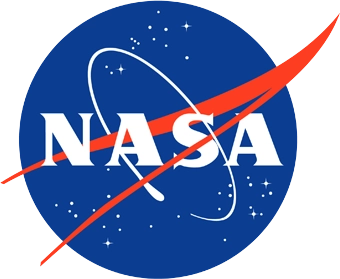
What is your research focus?
My research focuses on understanding how galaxies and galaxy clusters evolve, with a special interest in the hot gas that surround them. This gas, which can reach tens of millions of degrees, glows in X-rays and carries vital information about the history of star formation, galaxy growth, and the powerful influence of supermassive black holes. The big science questions I try to answer are: How do supermassive black holes shape their host galaxies? How does feedback energy, deposited by the black holes, move through the vast atmospheres of galaxy clusters? And how we can connect what we see in X-ray observations to the physical processes driving the evolution of these largest structures in the Universe?
To tackle these questions, I use two main approaches. First, I analyze large cosmological hydrodynamical simulations, essentially computer models of a fraction of the Universe that track how dark matter, stars, gas, and supermassive black holes interact over billions of years. These simulations let me test different physical models and make predictions that can be directly compared with observed data. Second, I work closely with observations from space-based X-ray missions, including NASA’s Chandra and the NASA-JAXA XRISM mission, to compare observed measurements with simulation predictions. By combining simulations and observations, my goal is to build a clearer picture of how galaxies and clusters form, grow, and evolve over cosmic time, and to uncover the powerful feedback processes driven by supermassive black holes that shape the Universe on its largest scales.
What was your first big research achievement?
My first big research achievement was uncovering a strong link between the growth of supermassive black holes (SMBHs) and the hot, X-ray emitting gas that surrounds their host galaxies, known as the hot circumgalactic medium (CGM). SMBHs are nearly ubiquitous in massive galaxies. For a long time, astronomers have known that SMBHs and galaxies somehow “co-evolve”, but the physical connection between them was still unclear.
I first explored this question during my first postdoc in Budapest, using cosmological simulations obtained from the IllustrisTNG project, an international effort that models the formation of galaxies and their hosted SMBHs across billions of years. In these virtual universes, I found a surprisingly tight correlation: the mass of the central SMBH was closely connected to the properties of the galaxy’s hot atmospheres, such as its temperature and X-ray luminosity. This result suggested that SMBHs and their surrounding gas are much more intertwined than previously thought.
The next step was to see whether this prediction held true in the real Universe. Working with an observational colleague, we used archival data from NASA’s Chandra X-ray Observatory to test the correlation in nearby galaxies. Remarkably, the observations confirmed what the simulations had predicted, the same strong SMBH-hot atmospheres relationship appeared in real systems.
This discovery was important because it provided a new way to understand how SMBHs and galaxies regulate each other’s growth. It also showed the power of combining numerical simulations with real observations: simulations can guide us to new predictions, while observations provide the ground truth.
Tell us about the research projects that you are working on.
My current research focuses on the XRISM mission. XRISM (X-ray Imaging and Spectroscopy Mission) is a major international partnership between NASA and JAXA (Japan Aerospace and Exploration Agency). It is providing a new level of detail about the motions and chemical composition of hot gas in the Universe through its high-resolution X-ray spectroscopy. I’m particularly interested in the hot gas that permeates galaxy clusters, known as the intra-cluster medium (ICM), which has temperature of tens of millions of degrees and shines in X-rays. It is constantly stirred and heated by cosmic events such as cluster mergers and by energy released supermassive black holes, making it a key tracer of how structure forms and evolves in the Universe. Within the XRISM collaboration, I am leading a study that compares XRISM observations of galaxy clusters with predictions from state-of-the-art cosmological simulations. These simulations allow us to model how turbulence and gas flows develop in the ICM over billions of years. By comparing XRISM’s data with the simulated predictions, we can test how well our models capture the true physics of the hot gas.
The challenge of closing this gap, and the thrill of turning abstract models into insights about the Universe, is what keeps me inspired.
What keeps you inspired by your work?
My work focuses on developing forward-modeling methods that connect the complex outputs of numerical simulations with the actual photons we detect from the space. The challenge of closing this gap, and the thrill of turning abstract models into insights about the Universe, is what keeps me inspired.
At its core, science is about making predictions from theoretical models and testing them against real data. If the two agree, we gain confidence in our understanding; if not, we refine or develop new models. While this idea sounds simple, in modern astrophysics it has become increasingly challenging. Both our simulations of cosmic objects and the instruments we use to observe the Universe are now highly sophisticated.
What science question intrigues you the most?
The science question that intrigues me the most is, What is dark matter? We know from decades of astronomical evidence that dark matter makes up most of the mass in the Universe, yet we still do not know its true nature. Unlike ordinary matter, it does not emit or absorb light, making it invisible to our telescopes. We only detect it indirectly through gravity, how it shapes galaxies, clusters, and the hot gas that surround them. My research connects to this mystery by studying the intra-cluster medium with X-ray data and comparing it with cosmological simulations based on current models of dark matter. By studying the motions and distributions of this hot gas, which trace the underlying dark matter, we can gain indirect but powerful clues about its role in shaping the Universe.
What do you enjoy the most about your job?
What I enjoy the most about my job as a scientist is the opportunity to connect with other brilliant researchers from around the world. Science is a collaborative effort, and working together with people who share the same passion for understanding the Universe is both motivating and rewarding. Every discussion, project, or collaboration teaches me something new and helps me grow as a researcher.
I also appreciate the opportunities science gives me to travel across the globe, whether for a new job position, attending conferences, or collaboration. These experiences broaden my perspective and make me feel part of a global community seeking answers to the same fundamental questions.
Most importantly, being a scientist allows me to keep learning and challenging myself. Every project opens new questions, every dataset reveals surprises, and every collaboration sparks fresh ideas. That constant process of discovery and personal growth is what I value most about my career.
What do you like to do in your free time?
In my free time, I love playing football (soccer!). As a child, I even dreamed of becoming a professional football player one day. While my career path took a different direction, the passion for the sport has stayed with me. At Goddard, I play for the Green Team in the Center league every summer, and two years ago we won a trophy together. I also enjoying playing the guitar. It’s a simple joy that helps me unwind and keep a bit of balance outside of research.
Published Date: Sep 30, 2025.
Hometown:
Ben Tre, Vietnam
Undergraduate Degree:
Bachelor in Science, Theoretical Physics, University of Science, Ho Chi Minh City, Vietnam
Post-graduate Degrees:
Master in Science, Astronomy and Astrophysics, Erasmus Mundus Joint Master Degree Programme in Astronomy and Astrophysics (AstroMundus), University of Innsbruck (Austria)PhD in Astronomy, Astrophysics, and Space Science, University of Rome “Tor Vergata”, Rome, Italy
